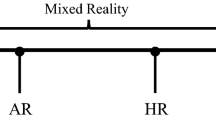Abstract
The aim of this paper is to propose an innovative process in small habitats design based on the use of smart material and structures. Space flights represents the extreme challenge in design for long time life support systems, nevertheless a number of analogues of space mission exists: submarines, terrestrial explorations, supertankers, mountaineering, natural and built simulators, small remote community and Antarctic winter bases. The concept proposed here is based on the use of a mockup enhanced by the utilization of smart materials and smart structures that permits to track the user experience and consequently optimize shapes, volumes, lights, color and the others characteristics. After a review of habitats users’ needs and specification from the space industry, a list of recommendations for the small habitat design is proposed. This work represent a preliminary research useful to address the components of the problem: the needs of people that will use the habitat for long time (onboard submarines, ships, or other confined situation), the psycho-environmental variables to be used in the design process to achieve the well-being of crew and guest, and the related technological issues.




Similar content being viewed by others
References
Benaroya, H.: Building Habitats on the Moon: Engineering Approaches to Lunar Settlements, 1st edn. Springer, New York, NY (2018)
Rondoni, F.: IUH Avalon, Immersive Underwater Habitat. University of Genoa, DAD, Genoa (2018)
Jones, P.M.: Human performance in space. Rev. Hum. Fact. Ergonom. 6, 172–197 (2010)
Mohanty, S., Jørgensen, J., Nyström, M.: Psychological factors associated with habitat design for planetary mission simulators. Space (2006)
Cohen M.M.: Human factors in space. NASA Technical Memorandum 86702 (1985)
Zignego, M.I.: Human factors in the design of naval vessels. In: Proceedings of the 5th international conference on applied human factors and ergonomics AHFE 2014, Kraków, Poland (2014)
Fraser, T.M.: The intangibles of habitability during long duration space missions, NASA CR-1084 (1968)
Connors, M.M., Harrison, A.A., Akins, F.R.: Living aloft–human requirements for extended spaceflight. NASA (1985)
Burattini, C., Bisegna, F., Gugliermetti, F., Marchetti, M.: A new conceptual design approach for habitative space modules. Acta Astronaut. 97, 1–8 (2014)
NASA Space Flight Human-System Standard, Volume 2: Human Factors, Habitability, and Environmental Health, NASA, Washington, DC (2011)
MacElroy, R.D., Kliss, M., Straight, C.: Life support systems for Mars transit. Adv. Sp. Res. 12(5), 159–166 (1992)
Suedfeld, P.: Antarctica and space as psychosocial analogues. REACH 9–12, 1–4 (2018)
Suedfeld, P.: Extreme and unusual environments: challenges and Responses. In: Clayton, S. (ed.) The Oxford Handbook of Environmental and Conservation Psychology, pp. 348–371. Oxford University Press, Oxford (2012)
Peldszus, R., Dalke, H., Pretlove, S., Welch, C.: The perfect boring situation—addressing the experience of monotony during crewed deep space missions through habitability design. Acta Astronaut. 94(1), 262–276 (2014)
Martinez, V.: Architectural design for space tourism. Acta Astronaut. 64(2–3), 382–390 (2009)
Drayer, G.E., Howard, A.M.: Modeling and simulation of an aquatic habitat for bioregenerative life support research. Acta Astronaut. 93, 138–147 (2014)
Clipson, C.: Simulation for planning and design. In: Marans, R.W., Stokols, D. (eds.) Environmental Simulation, pp. 23–57. Springer, Boston, MA (1993)
Bjoerkli, L.E.: A review of virtual prototyping approaches for design evaluation. https://www.ntnu.no/documents/10401/1264435841/TPD4505_LeifErikBjoerkli_Final.pdf/4255e7a2-f5f5-4591-b201-b0f14d3d466a
Mansutti, A., Covarrubias Rodriguez, M., Bordegoni, M., Cugini, U.: Tactile Display for Virtual 3D Shape Rendering. Springer, Cham (2017)
Breeze, R.K.: Space Vehicle Environmental Control Requirements Based on Equipment and Physiological Criteria, WADD-ASD-TR-61-161, (Pt. l) (1961)
Rade, D.A., Steffen, V.: Introduction to smart materials and structures. In: Lopes Junior, V., Steffen, V., Savi, M.A. (eds.) Dynamics of Smart Systems and Structures, pp. 121–134. Springer, Cham (2016)
Leo, D.J.: Engineering Analysis of Smart Material Systems: Leo/Smart Material Systems. Wiley, Hoboken (2007)
Additional information
Publisher's Note
Springer Nature remains neutral with regard to jurisdictional claims in published maps and institutional affiliations.
Rights and permissions
About this article
Cite this article
Zignego, M.I., Gemelli, P. A smart mockup for a small habitat. Int J Interact Des Manuf 14, 467–479 (2020). https://doi.org/10.1007/s12008-019-00629-9
Received:
Accepted:
Published:
Issue Date:
DOI: https://doi.org/10.1007/s12008-019-00629-9




